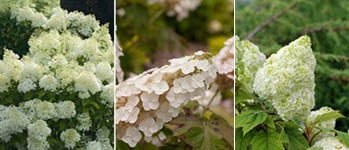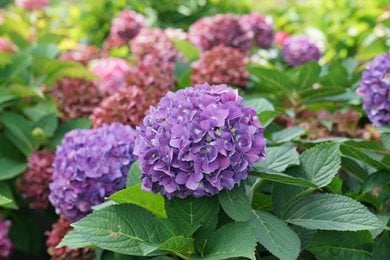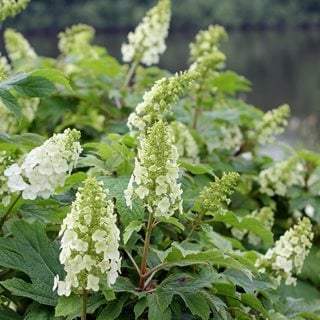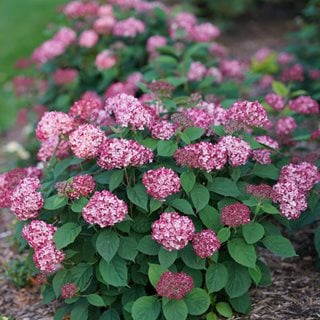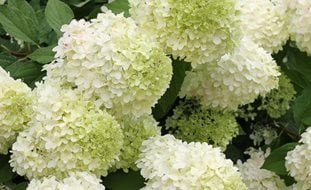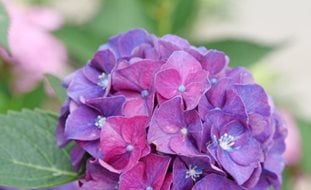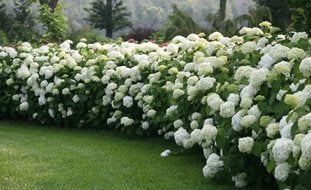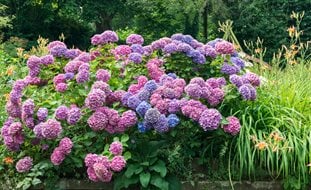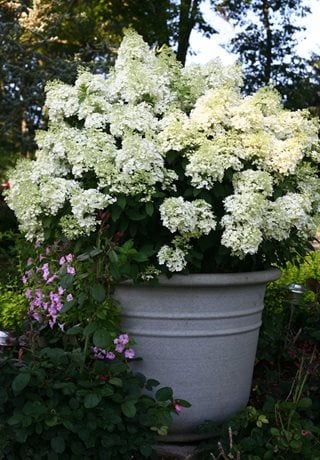8 Reasons Why Your Hydrangeas Won't Bloom
Get your underperforming hydrangeas to bloom better with these tipsIf you are having trouble getting your hydrangea to bloom, you’re not alone. There are a number of possible reasons, so it’s crucial to figure out which particular problems you’re having in order to solve them. Here are the most likely reasons why your hydrangea won’t bloom:
1. TOO MUCH SHADE
Though hydrangeas prefer protection from hot direct sun, too much shade can prevent them from forming flower buds.
Ideal light conditions for hydrangeas are several hours of direct morning sun with afternoon shade, or dappled shade that allows plenty of bright indirect light. Oakleaf hydrangeas (H. quercifolia) are more shade-tolerant than other types. Create more light or move your hydrangea to a sunnier spot.
2. TOO MUCH SUN
Conversely, too much direct sun may stress hydrangea plants, which can force them to conserve energy by not forming flowers. Some types such as panicle hydrangea (H. paniculata) can tolerate more direct sun than others, and can even thrive in full sun in northern climates. The ever-popular bigleaf hydrangeas (H. macrophylla) need protection from hot afternoon sun, especially in warmer climates.
If your hydrangea leaves are scorched, or develop yellow or brown edges, these can be signs that your plants need more shade. Provide more protection from direct sun or move your hydrangea to a shadier area.
3. IMPROPER PRUNING
One of the most common reasons for hydrangeas failing to bloom is improper pruning. Hydrangeas actually bloom best with little or no pruning, so it’s important to give plants enough room to grow into their mature size.
Depending on the type, hydrangeas bloom on either old wood (growth from the previous season) or new wood (growth from the current season), so make sure you know which kind you have before cutting plants back.
Bigleaf (H. macrophylla), oakleaf (H. quercifolia), climbing (H. anomala ) and mountain (H. serrata) hydrangeas all bloom on old wood. Lightly prune these back immediately after flowering before plants develop buds for the following growing season.
Panicle hydrangea (H. paniculata) and smooth hydrangea (H. arborescens) bloom on the current season’s growth. Prune these in late winter or early spring as plants are breaking dormancy. These types can tolerate more aggressive pruning.
There are a few reblooming varieties, such as the Let's Dance® series or Endless Summer®, that bloom on both old and new wood. These require no pruning, except to trim out any dead, damaged, or diseased branches as needed.
Pruning hydrangea plants back too hard may result in the loss of flowers until the following year. Make sure temperatures are reliably above freezing before pruning in order to avoid cold stress to plants.
Learn more about how to prune hydrangeas.
4. USING THE WRONG FERTILIZER
Nitrogen is essential for healthy leaf and plant development, but too much nitrogen can cause plants to produce excessive leaf growth at the expense of flowers. Use a slow-release fertilizer with a higher phosphorus content to promote flowering.
Hydrangeas prefer fertile, well-draining soil with a slightly acidic pH. Extreme pH levels may impair the absorption of nutrients, which can affect a plant’s ability to form flower buds.
5. DEER DAMAGE
For gardeners who live in rural or suburban areas, the tender new leaf growth and young flower buds of hydrangeas are appealing to deer. Grazing can result in partial or total loss of flowers for the growing season. Plants are most susceptible in late winter or early spring when food sources for deer are scarce. Protect plants with repellent, barriers, or other remedies to discourage deer.
6. COLD WEATHER
For gardeners in colder climates, a harsh winter or late hard freeze can cause damage to developing flower buds, which may result in the loss of flowers for that season. Bigleaf and oakleaf hydrangeas are more susceptible because they are less hardy than other hydrangeas.
Mulch the area around the base of plants in fall with several inches of compost, leaves, or straw to insulate roots. Protect plants with burlap or other covering for the entire winter, or at least during extreme cold spells or frosts. Plant more cold-hardy types such as panicle and smooth hydrangeas.
Learn more about how to protect your hydrangeas in winter.
7. NOT ENOUGH WATER
Hydrangeas need regular water to thrive. Too little water can result in stunted growth and failure to develop flower buds. A drought in the previous growing season can also affect flowering the following year. Plants need consistent moisture, about 2 inches of water per week.
Water more frequently during hotter weather. If plants are drooping, wilting or exhibiting scorched leaves, these are signs that they are not receiving enough water. Oakleaf hydrangeas are more drought-tolerant than other types.
8. YOUNG PLANTS
Newly planted hydrangea shrubs can take 2 to 5 years before they begin blooming. Purchase larger specimens if you don't want to wait, or simply enjoy the establishment of smaller specimens. Be patient and make sure there aren’t other issues that are preventing plants from flowering.
Learn more in this video: Why Didn't My Hydrangea Bloom?
